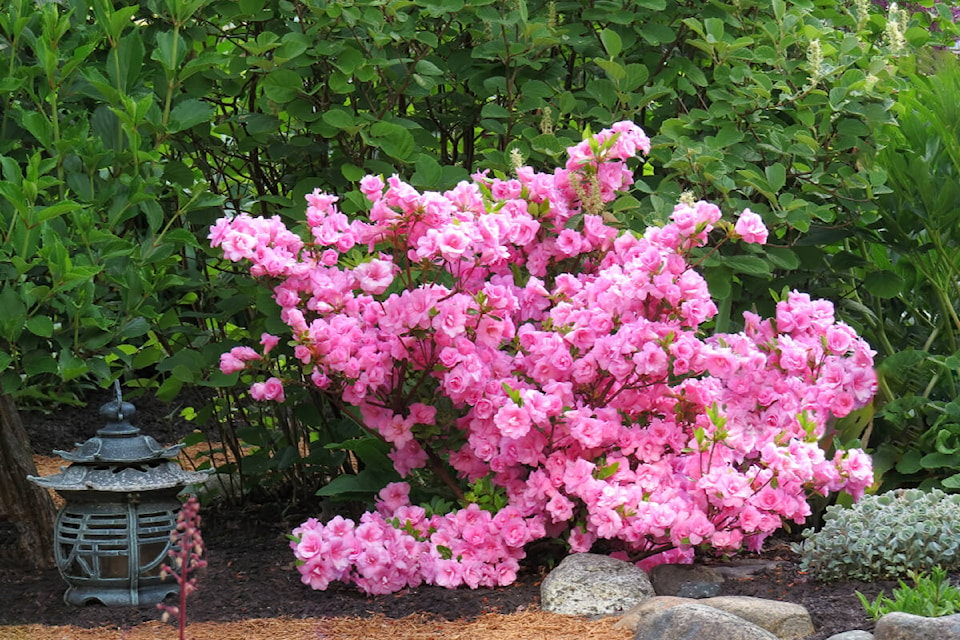I left you dangling on the word “hugelkultur” in my last column. So what is it?
First off, how to pronounce it! HOO-gul-kul-tur and if you roll it off your tongue a few times, you will “get it.”
Second, it roughly means “mound culture” in German.
And third, this method of building garden beds dates back centuries.
Fast forward to this century, John and I were treated to an example, and an explanation, of hugelkultur a few years back when we visited the garden of friends of friends.
New arrivals from the Lower Mainland, this couple had a dazzling array of rhododendrons. It was interesting to hear about Sue’s family business of breeding rhodos while we oohed and aahed over the gorgeous flowers. Most of the plants were in pots at that viewing but she showed us the new beds she was creating for them as she expanded the garden area of their property.
Up to that point, we had never seen an example of this bed-building method. Only read about it in books and articles.
A hugelkultur bed is sloped… wider at the bottom than at the top… and it can be in any shape - short, long, rectangular, gently curving or serpentine. The materials used to build it are large logs, branches, twigs, grass clippings, kitchen compost, manure and topsoil.
The real beauty of this particular composition design is the number of benefits. Seven of them according to a fact sheet I came across written by a class of landscape students at the Oklahoma State University Extension after they had constructed their own hugelkultur bed.
At the top of the list was water conservation. If properly constructed in an area where surface water runoff can be captured, the bed is self-irrigated. Some watering may be needed during a long drought but not as much as a “typical” garden bed would need.
Second, the students noted “low maintenance” because these beds do not require regular watering. But they do stress regular weeding should be kept up!
Third, because of its water retention capabilities, hugelkultur is an efficient raised rain garden that allows water to collect and slowly drain into the ground. It should be utilized more in stormwater management projects, I am thinking… and perhaps it is in some countries.
Fourth, the students claim growing food crops in raised beds is a self-sufficient and economical way of producing higher crop yields.
Soil improvement rated fifth. And the bonus is it sequesters carbon because you are utilizing landscape debris which otherwise would be sent to a landfill or burned.
Number six: hugelkultur is permaculture in the truest sense of the word. It is made up of all natural ingredients. No processed newspaper or cardboard.
Seventh and best of all - it is affordable if you have access to logs and branches, as well as an adequate supply of grass clippings. It is also easy to build, especially if you build it on top of the ground. It is a little more work if you decide you do not want a tall mound and have to dig a furrow in which to lay your logs and branches.
I read another article written by a couple describing their experience building hugelkultur beds on their farm. They built wooden raised beds and used wood chips instead of small logs. In the “one year later” follow up they noted logs are much preferred to wood chips. They also stressed that the topsoil depth should be at least as deep as the wood base and to monitor the nitrogen level in each bed. (Wood uses up nitrogen in its composting process which impacts on your crops.)
Leslie Cox co-owns Growing Concern Cottage Garden in Black Creek. Her website is https://duchessofdirt.ca/
